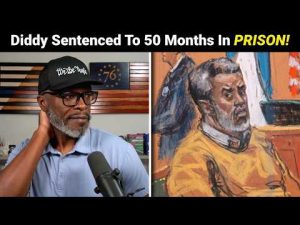In the ever-evolving world of cinema, one would hope that films could evoke meaningful discussions rather than muddled ideologies. However, the latest offering from acclaimed director Paul Thomas Anderson, titled “One Battle After Another,” appears to miss the mark entirely. While critics are perhaps overly enthusiastic, claiming it’s one of the best films in years, a keen examination reveals a muddled narrative that promotes radical ideas masked as art.
At first glimpse, the cinematography and music score, delivered by Johnny Greenwood, are commendable. The film contains stunning visuals and a lively score, which highlight the filmmaker’s undeniable talent. One can appreciate the aesthetic prowess while recognizing that a beautiful film does not redeem a problematic narrative. The story revolves around characters like Ghetto Pat Calhoun and Perfidia Beverly Hills—a couple leading a revolutionary group dubbed the French 75. Unfortunately, Anderson’s screenplay appears to be an ideological vehicle preparing viewers for a ride through chaos rather than an engaging tale.
The film’s plot entails a series of events that serve to illustrate a larger agenda rather than develop an engaging story. The narrative starts with a raid on an ICE facility, immediately steeping the viewer in an anti-establishment worldview. It seems the film’s aim is to glamorize revolutionary violence under the guise of social justice. Characters engage in explosive antics to fight against what they see as white Christian nationalism, sporting names that warrant a chuckle more than they convey seriousness. Perfidia Beverly Hills is not just a name; it epitomizes a film rife with contrived symbolism that ultimately distracts from coherence.
Anderson’s storytelling crashes and burns when it introduces a convoluted plot involving colonial attitudes and racial tensions that are handled with such a heavy hand, one could swear they were watching a documentary rather than a drama. The messages depicted are dangerously simplistically black and white, portraying all revolutionaries as heroes and their ideological opponents as villains. It promotes conspiracy theories, suggesting that a powerful group of white nationalists is orchestrating oppression, directly pitting groups against one another—a portrayal more likely to sow division than provoke thoughtful conversation.
While there are moments of levity through the film’s oddball humor, such intent falters in the face of its underlying themes. The film tries to juggle many complex ideas but ends up with a final message that leaves viewers questioning what they actually witnessed. The evolution of Ghetto Pacuno’s daughter, who ultimately follows in her mother’s radical footsteps, culminates in a narrative that argues for social disorder over constructive citizenship. This perspective invites viewers to consider if being a productive member of society pales in comparison to chaotic rebellion.
In a landscape already rich with political tension, it is disheartening to witness a film that tries to make sense of societal complexities through revolutionary fervor, ultimately failing to provide a valid perspective or any form of resolution. The concluding notion that radicalism needs to be passed down through generations makes one directly question the movie’s value. If films should inspire and reflect the best in humanity, “One Battle After Another” seems to herald an ideology quite the opposite, leaving audiences to ponder how we got from cinematic excellence to such a mixed bag of messages.
In conclusion, while Paul Thomas Anderson has delivered fantastic films in the past, this particular venture leaves much to be desired. Perhaps instead of glorifying chaos, future directors should focus on narratives that recognize the value of societal unity and constructive dialogue. Because at the end of the day, the real battles won’t be at the theaters but rather in our communal understanding and respect for one another.







